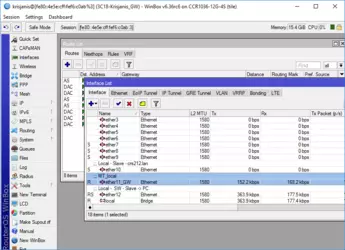What are the best routers on the market that aren't clearly overpriced? I spent like $200 on a good one but it seems to get overwhelmed by traffic between devices and to the internet, plus I plan to move somewhere with fiber Internet and would like to get 2.5g internet. Or is anyone making their own routers using Linux, and what hardware do you recommend that has enough power and at least two 2.5g ports and 4 or 5 1g ports?
Do you need wireless support or will you use a separate WAP? Do you understand networking concepts like NAT or are you willing to learn? Do you have some existing hardware that is acting as a server you could theoretically run a software router on? Do you have a switch already? If so, is that switch managed?
In terms of software routers, there's pfSense and OPNsense. Both are free, OPNsense is a fork of pfSense because the pfSense devs are glue eating retards who refuse to improve their trash architecture. These are purely routers, not WAPs nor switches and you need somewhere to install it. You can basically install it on anything x86 and 1 Gbps performance isn't hard to achieve. They're both very easy to virtualize too.
For actual network gear, if you want something user friendly, Ubiquiti is a decent choice. That being said, if you need a WAP and go Ubiquiti, you must keep in mind that it's braindead without a controller. You can run the Unifi controller yourself as a virtual machine, use a separate CloudKey or buy a bundle that includes one like the Dream Machine. Shit is expensive though.
Poorfags who want a taste of the enterprise networking experience look no further than Mikrotik. It's cheap as hell but only genuine autists can truly operate them. Mikrotik network gear generally comes in two flavors, SwitchOS and RouterOS. The SwOS devices are very easy to configure with a basic web interface that gives you layer 2 management functionality, but it's really just for cheap managed switches and is generally only useful if you want to do VLANing.
The ROS devices are the full router experience but again, the interface is something to behold. Enter Winbox

It's a very spartan UI, incredibly fast and uses no resources whatsoever, but it's also incredibly user unfriendly. From a barebones install you have to configure everything, outbound NAT rules, sensible inbound firewall rules and common services such as DNS forwarding, DHCP server, etc. There's wizards to try and make the experience easier, but they can sometimes make life harder.
You can get a little box like
this and it can do 1 Gbps under most circumstances. I was using one for a bit but only moved back to OPNsense because the Wireguard performance was bad on the anemic CPU.




